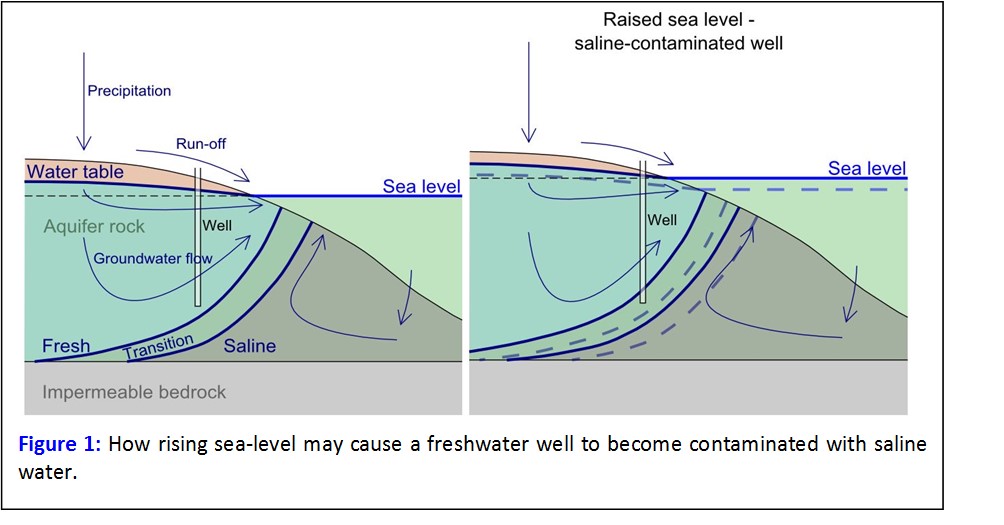 Christopher Barry is a doctoral researcher at the University of Birmingham. He has written for the GfGD Blog in the past – detailing his contribution to water projects in Burkina Faso and fundraising efforts to support such work. We have recently added a briefing note to our website, written by Christopher, describing the role of climate change on global groundwater resources. You can access the full briefing note here.
Christopher Barry is a doctoral researcher at the University of Birmingham. He has written for the GfGD Blog in the past – detailing his contribution to water projects in Burkina Faso and fundraising efforts to support such work. We have recently added a briefing note to our website, written by Christopher, describing the role of climate change on global groundwater resources. You can access the full briefing note here.
To help share the contents of this briefing note we are publishing a portion of it’s contents over a series of four blogs. In our last blog we gave an introduction to key impacts. In this latest blog we focus on the issue of saline intrusion. At the end of each blog is a link to the full PDF, where you can read each section in its full context and find a full reference list.
3. Saline Intrusion
3.1 How it happens
Fresh (non-saline) groundwater in coastal areas forms an interface with saline groundwater under the sea. Fresh water is less dense than saline water, so it will be found above the saline water. Fresh water and saline water also do not tend to mix. Both these effects are good because it means that the fresh water is easily accessible and will not be contaminated by the adjacent saline water. The fresh groundwater discharges into the sea and may be used by humans. It is replenished by recharge from rainfall (however indirect that may be).
This balance of input and output can be taken out of balance. Excessive use of groundwater will increase the output, and so cause the saline-fresh water interface to move inland. The system is also taken out of balance by a rise in sea-level, which will cause the rate of fresh water discharge into the sea to increase, until the fresh-saline water interface has moved up and inland. As a result of this, wells drawing in freshwater near the interface may start to draw saline water (Figure 1).

Global sea-level rise is expected as a result of melting ice near the Earth’s poles, which increases the amount of water in the sea and thermal expansion of water due to heating. Both effects are driven by rising atmospheric temperature. It was estimated that global average sea-level rose by about 3 cm between 1993 and 2003 (IPCC, 2008), with roughly equal contributions from melting ice and thermal expansion.
3.2 Threatened Areas
Coastal areas are the main source of concern for these effects due to the number of large cities on the coast across the world. Large delta areas are particularly vulnerable, with large areas of flat land in danger from inundation, which, as well as many other problems, would make all the groundwater under the flooding salty. Inland aquifers surrounded by saline aquifers may also come under threat as the freshwater recharge to them is decreased by changes in rainfall patterns and an increase in evapotranspiration (direct evaporation and evaporation from uptake through plants) of surface water.
Small oceanic islands are particularly vulnerable to saline intrusion because their freshwater lens by buoyancy and the balance between recharge and outflow. The Ghyben-Herzberg relationship demonstrates, by considering buoyancy, that the freshwater lens will extend to a depth below sea level forty times the height by which it stands proud of sea level. Therefore a small rise in sea level will be cause a decrease in the depth of the freshwater lens by approximately forty times its magnitude.
3.3 Examples
There is 4000 square kilometres of low-elevation land in the Nile Delta that is thought to be in danger of being submerged under the sea because of sea-level rise in the Mediterranean within this century. All fresh groundwater resources under this area would be lost if this were to occur (Sherif and Singh, 1999). In addition, a rise in sea-level relative to the groundwater table would cause in intrusion of saline water landward of the shore, depending on the magnitude of the rise. A sea-level rise of 0.2 m would cause a landward intrusion of the saline-fresh water interface by about 2 km, according to the hydrogeological computer simulations of Sherif and Singh (1999). In an inland aquifer case, Chen et al. (2004) note that regional climate change leading to reduced groundwater recharge (discussed in a later section) to a freshwater aquifer in Manitoba, Canada, could result in an intrusion of salt water from an adjacent saline aquifer because of the resulting water pressure difference.
Saline intrusion is also caused by high abstraction of groundwater for human consumption because it causes a fall in the water table relative to sea-level. With increasing global population and strain on surface water resources, which in many ways are more sensitive to climate change than groundwater, saline intrusion caused by groundwater abstraction is likely to occur in parallel with saline intrusion caused by sea-level rise, and it is difficult to separate the separate drivers to intrusion from observations.
Download the full briefing note (including a reference list) on the Water and Sanitation page of the GfGD website. Parts 3 and 4 will be published on this blog in the coming days.
